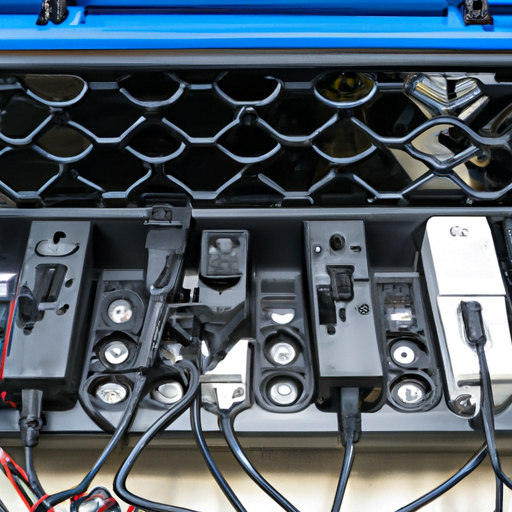Are you interested in keeping your power inverter system running smoothly? In this article, we will show you how to effectively maintain and protect it. By conducting regular inspections and cleanings, ensuring proper wiring and connections, implementing surge protection measures, monitoring battery performance, and troubleshooting common issues, you can guarantee that your power inverter system remains in excellent condition. So, let’s delve into the best practices for maintaining optimal functionality and longevity of your power inverter system.
Regular Inspection and Cleaning
You should make sure you’re regularly inspecting and cleaning your power inverter system to ensure its optimal performance. One important aspect of maintaining your power inverter is the inspection frequency. It is recommended that you inspect the system at least once every three months. Regular inspections allow you to identify any potential issues or damages before they escalate into major problems. Additionally, dust accumulation can have a negative impact on the efficiency of your power inverter. Dust particles can clog up the components and hinder their ability to function properly. Therefore, it is crucial to clean the system regularly to remove any dust buildup. By doing so, you will be able to maintain the optimal performance of your power inverter and prolong its lifespan.
Proper Wiring and Connection
Proper wiring and connection is essential to ensure the efficiency and safety of your power inverter setup. When setting up your power inverter, it’s crucial to follow grounding requirements to prevent any electrical hazards. Make sure to connect the ground wire securely to a suitable grounding point. This will help protect you from electric shocks and potential damage to your equipment. Additionally, always take safety precautions when working with electricity. Ensure that all connections are tight and secure, avoiding loose or exposed wires that can lead to short circuits or fires. It’s also important to use proper insulation materials for added protection. By paying attention to these details, you can maintain a safe and efficient power inverter system that will serve you reliably for years to come.
Implementing Surge Protection Measures
To ensure the safety of your electrical devices, it’s crucial to implement surge protection measures in your setup. One important aspect of surge protection is grounding requirements. Proper grounding helps divert excess electrical energy away from your devices and into the ground, preventing damage caused by power surges. Make sure all components of your power inverter system are properly grounded according to manufacturer guidelines and local electrical codes.
Another key factor in surge protection is voltage regulation. Power surges can cause a sudden increase in voltage, which can be harmful to your devices. By using voltage regulation devices such as surge protectors or voltage stabilizers, you can limit the amount of voltage that reaches your equipment, providing an added layer of protection against power surges.
Monitoring Battery Performance
Monitoring battery performance is essential to ensure the longevity and reliability of your electrical devices. Regular battery maintenance is crucial in order to maximize its capacity and prevent unexpected power failures. By keeping a close eye on your battery’s performance, you can identify any potential issues early on and take appropriate measures to address them.
One important aspect of battery maintenance is monitoring its capacity. Over time, batteries can lose their ability to hold a charge effectively. By regularly checking the capacity, you can determine if it’s time for a replacement or if any adjustments need to be made in terms of usage or charging habits.
In addition, monitoring battery performance allows you to detect any abnormalities such as excessive discharge rates or irregular voltage levels. This information can help you troubleshoot potential problems and ensure that your devices are powered efficiently.
Troubleshooting Common Issues
If your battery is not holding a charge effectively, troubleshooting common issues can help identify the root cause of the problem. Start by checking the power inverter maintenance to ensure it is clean and free from any debris or dust that may be affecting its performance. Next, examine all the connections and cables to make sure they are secure and undamaged. Sometimes, faulty components can be the culprit behind a battery not holding a charge. Look for any signs of wear or damage on components such as fuses, switches, or capacitors. If you notice any issues with these components, it’s best to replace them to restore your battery’s performance. Remember that regular maintenance and timely identification of faulty components are essential for keeping your power inverter system running smoothly.
